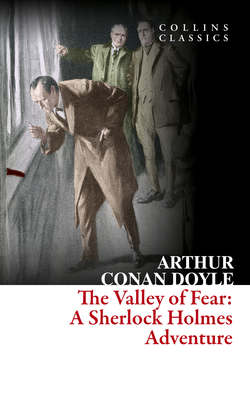Читать книгу The Valley of Fear - Артур Конан Дойл, Исмаил Шихлы - Страница 6
Life & Times About the Author
ОглавлениеArthur Conan Doyle was born in Edinburgh, Scotland, in 1859, the year Charles Darwin’s The Origin of Species was published. Conan Doyle was raised Catholic but declared himself agnostic by the time he began reading medicine at Edinburgh University in 1876. He attained his doctorate in 1885, researching a condition caused by syphilis, known as tabes dorsalis, and characterised by the degeneration of sensory neurons causing the body to malfunction.
Conan Doyle’s professional life began with a stint as ship’s doctor on a voyage around the coast of west Africa. In early 1882, before his doctorate was complete, he set up a surgery in Plymouth, England, with a university friend. Unfortunately, their professional relationship was short-lived and Conan Doyle had moved to Southsea, England, by that summer. He then established his own medical practice, but found that business was slow, so he worked on his writing, which he had enjoyed from an early age. By 1887, he had published his first Sherlock Holmes novel and steered his career in a different direction.
Between 1887 and 1927, Conan Doyle published nine Sherlock Holmes books: four novels and five collections of short stories. He wrote many other books, but Sherlock Holmes became such an iconic character that his other works were rather overshadowed. In fact, Conan Doyle made the decision to kill off Sherlock Holmes in 1894, in a short story entitled The Final Problem. There was such public outcry at the death of Sherlock Holmes that Conan Doyle was moved to bring him back to life in The Return of Sherlock Holmes.
Despite his agnosticism, Conan Doyle developed an interest in spiritualism, becoming fascinated by beliefs in supernatural phenomena, including the Cottingley Fairy photographs, now understood to be hoaxes. His obsession also created a rift between himself and his friend, escapologist Harry Houdini. Conan Doyle couldn’t accept that Houdini’s escapades were elaborate tricks and Houdini grew vexed at Conan Doyle’s insistence that he possessed magical powers.
Conan Doyle suffered from considerable personal tragedy in the early years of the 20th century. A number of family members died, including his wife Louise, in 1906, and his son Kingsley, in 1918. There was also the horror of World War I to contend with, which affected the entire nation’s morale.
